|
|||
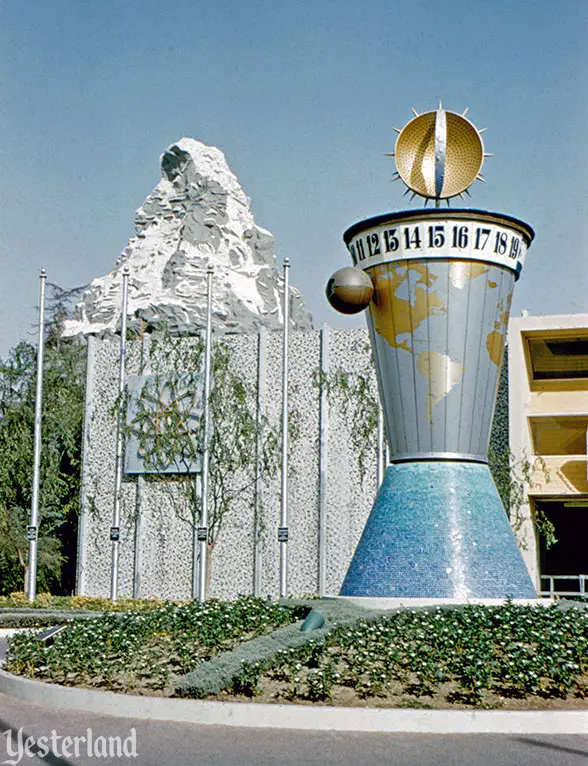
Photo by Roger J. Runck, 1960, courtesy of Robin Runck |
|||
|
|
|||
|
Every land has its icon. Just look at Your Guide to Disneyland. |
|||
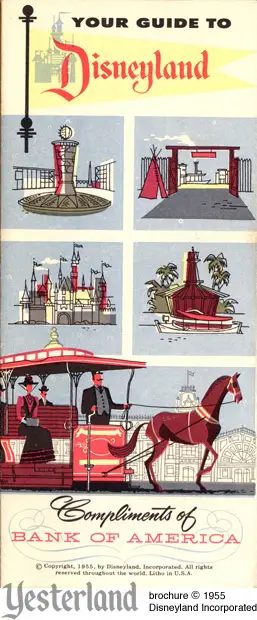
Courtesy of Orange County Archives “Compliments of Bank of America” |
|||
|
You enter Frontierland through the frontier stockade. You enter Fantasyland through the fairytale castle. Adventureland is supposed to have a tall, round pavilion at the jungle dock—although it’s not really there. |
|||
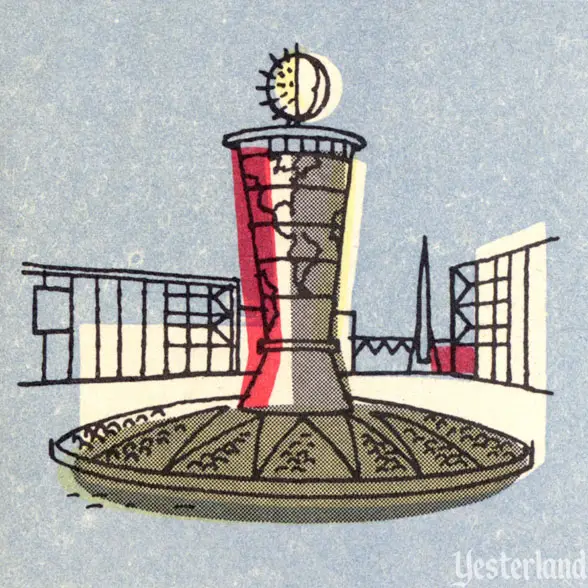
image © 1955 Disneyland Inc. / from 1955 Disneyland Guide, courtesy of Orange County Archives World Clock artwork |
|||
|
Tomorrowland has an entrance icon too. You enter this World of Tomorrow at the World Clock. The park’s July 15, 1955, advertising supplement in the Los Angeles Times explains it this way: “1955 becomes 1986 as you enter the new era—Tomorrowland where our hopes and dreams for the future become today’s realities. Symbolizing the time transition is Tomorrowland’s futuristic clock. At a glance, this elaborate chronometer tells you the exact minute and hour anywhere on the face of the planet Earth.” Line up a location on the world map with the hour above it. For the minutes past the hour, look at the ball on the side of the world map. |
|||
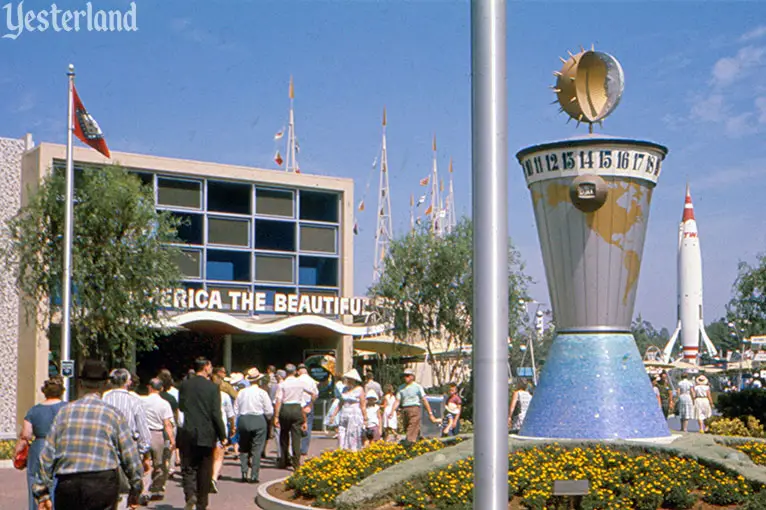
Photo by Roger J. Runck, 1960, courtesy of Robin Runck
|
|||
|
In the long tradition of public clocks and clock towers around the world, Tomorrowland’s World Map does double duty. It not only provides a useful function; it’s also a work of art. Take a look at the sun and moon at the top of the World Clock. Actually, the World Clock tells the time for almost anywhere on Earth—but not for time zones with offsets that are not full hours, such as Newfoundland Time. When it’s noon at Disneyland, it’s 4:30 p.m. in Newfoundland—because this Canadian province is an hour and a half ahead of Eastern Time. |
|||
|
|
|||
|
The World Clock was an opening day landmark at Disneyland in 1955. But time moves on. |
|||
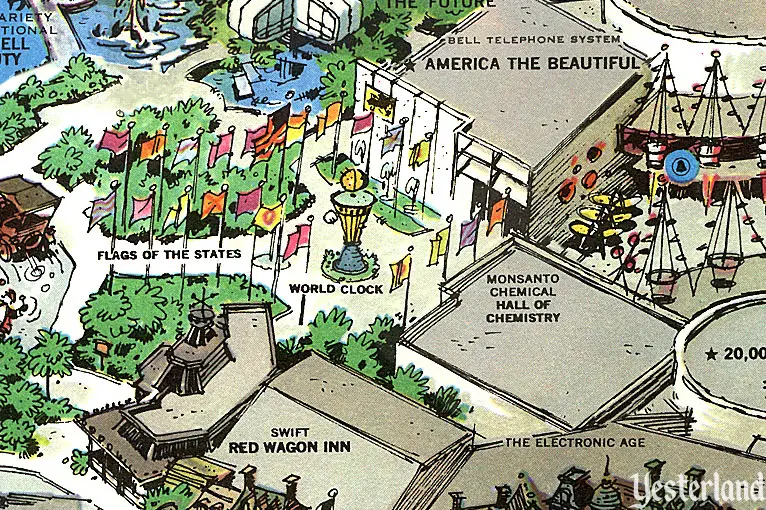
1962 Disneyland souvenir map excerpt © 1962 Walt Disney Productions World Clock at the entrance to Tomorrowland from 1955 to 1966 |
|||
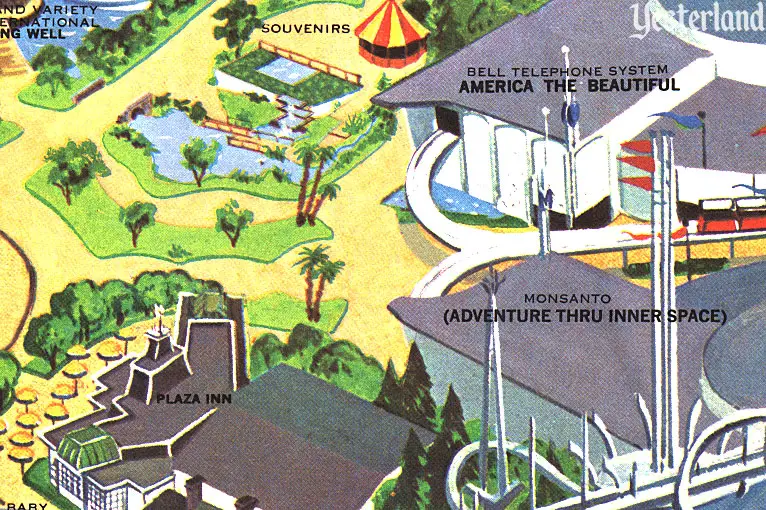
1962 Disneyland souvenir map excerpt © 1968 Walt Disney Productions Entrance to Tomorrowland beginning 1967 |
|||
|
The World Clock represented the future in 1955—but by 1966, it represented the past. When the New Tomorrowland opened in 1967, the World Clock was gone—along with everything else that had looked futuristic just a dozen years earlier, such as the atomic age symbols on the buildings and the Rocket to the Moon. After all, the real NASA rockets that carried man into space didn’t look anything like Disneyland’s Moonliner. These days, we tend to blur the styles of the 1950s and 1960s together and label them as Mid-Century. But, in reality, there was a huge shift in what the public considered “modern” between those two decades—arguably a much bigger change in taste than between the 2000s and the 2010s. |
|||
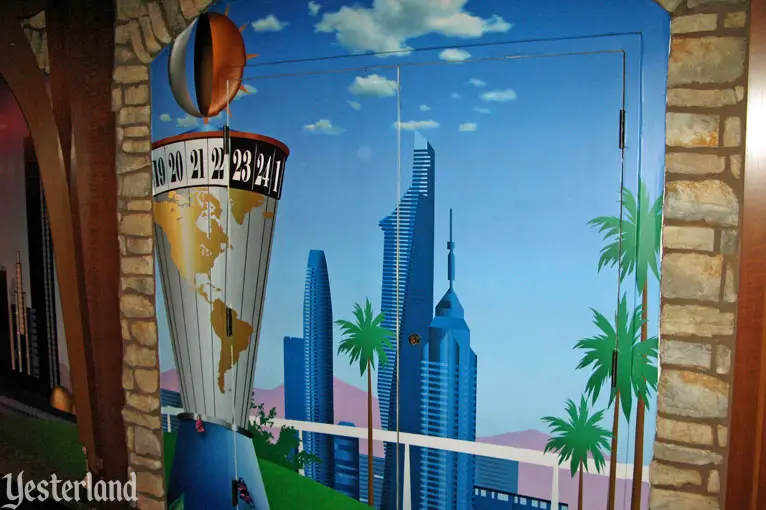
Photo by Werner Weiss, 2010 Homage to the World Clock at Disneyland’s Innoventions |
|||
|
The World Clock returned to Disneyland in the 21st Century—but only as a mural inside the Innoventions pavilion. It was on a wall with a door at the Innoventions Dream Home, which opened May 2008 and closed February 2015. It you want to see a real World Clock, you can do so in Berlin, Germany. It’s similar in concept to the one that was at Disneyland, although its shape is quite different. |
|||
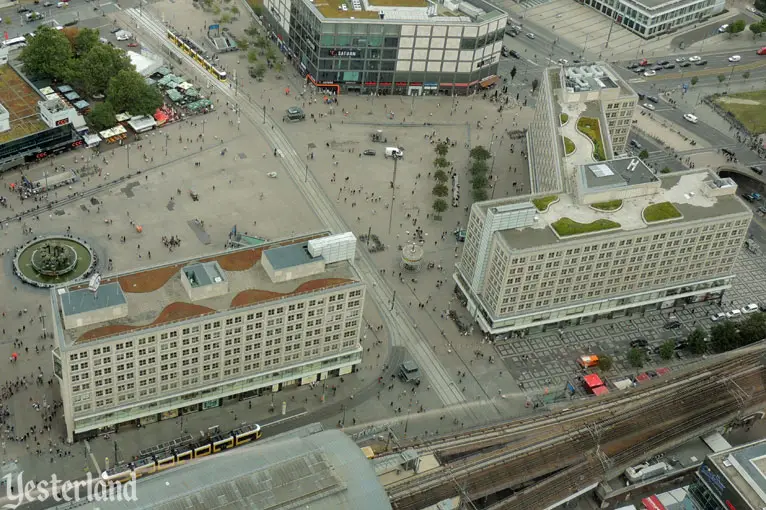
Photo by Werner Weiss, 2016 Alexanderplatz in Berlin, with its World clock near the center of the photo |
|||
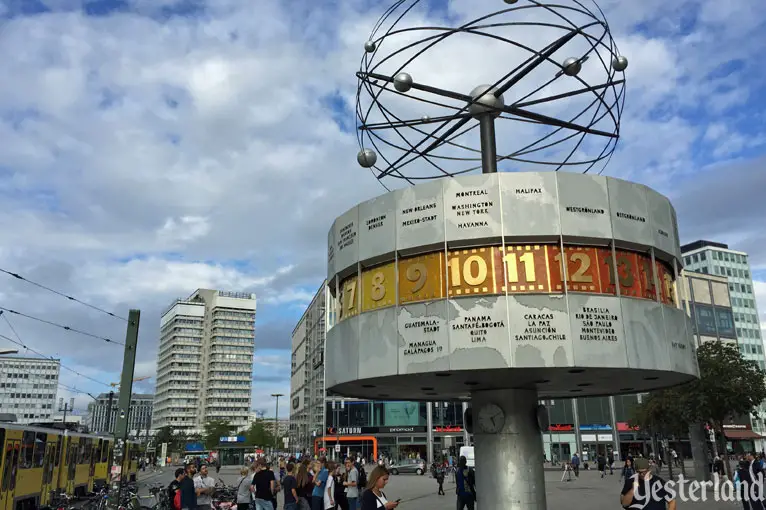
Photo by Werner Weiss, 2016 Alexanderplatz World Clock (Weltzeituhr) |
|||
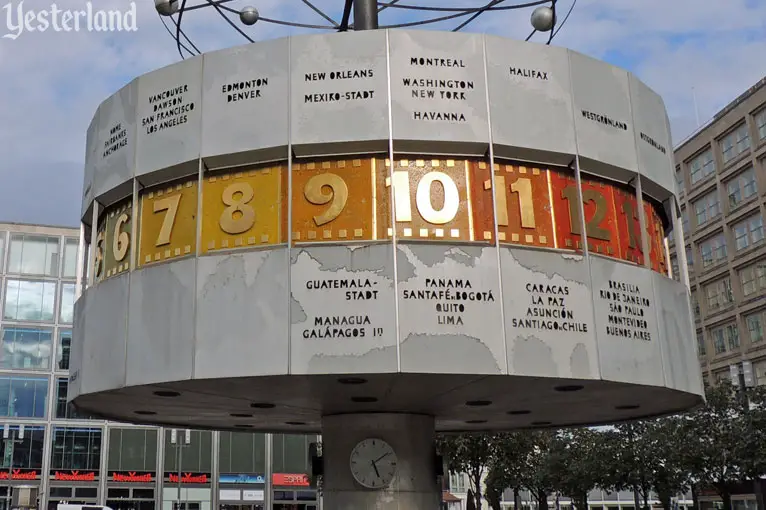
Photo by Werner Weiss, 2016 A closer look at the Alexanderplatz World Clock |
|||
|
The World Clock at Berlin’s Alexanderplatz was erected in 1969, three years after the one at Disneyland was removed. Instead of the sun and moon, the newer World Clock is topped by a sculpture representing the solar system. It resembles the large atom on each of the two buildings at the entrance to Disneyland’s Tomorrowland from 1955 to 1966 (shown in the first photo of this Yesterland article). For the Eastern Time Zone in the Northern Hemisphere, the World Clock at Alexanderplatz lists Montreal, Washington, New York, and Havana (German spelling: Havanna). The inclusion of Havana is a reminder that Alexanderplatz was part of Communist East Berlin before the reunification of Germany in 1990. If the folks who run the city of Berlin ever decide their World Clock represents the past and they no longer want it, Disney should buy it. Disney could replace Havana with Orlando. |
|||
|
|
Click here to post comments at MiceChat about this article.
© 2024 Werner Weiss — Disclaimers, Copyright, and Trademarks Updated July 19, 2024 |
||